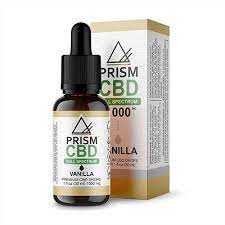Dropper bottles are essential in various industries, including cosmetics, pharmaceuticals, and essential oils. The packaging for these bottles has undergone significant changes over the years, evolving to meet both functional and aesthetic demands. This article explores the evolution of dropper bottle boxes, highlighting key trends and innovations that have shaped their development.
Historical Context of Dropper Bottle Packaging
Dropper bottles have been used for centuries, with their design rooted in practicality and functionality. Historically, these bottles were often simple glass vials with basic labels. The primary focus was on preserving the contents and facilitating precise dispensing. Early packaging innovations were limited to improving the durability of glass and creating secure closures.
The Rise of Customization and Branding
In the late 20th century, as competition intensified across various industries, branding and customization became crucial. Companies began to realize that packaging was not just about functionality but also about making a statement. Dropper bottle boxes started to evolve with more elaborate designs, incorporating unique colors, patterns, and branding elements. This shift was driven by the need to stand out in a crowded marketplace and build brand identity.
Sustainability and Eco-Friendly Materials
With growing environmental concerns, sustainability became a significant trend in packaging design. The push towards eco-friendly materials influenced dropper bottle boxes, leading to the adoption of recyclable and biodegradable options. Brands began exploring materials such as recycled cardboard, kraft paper, and soy-based inks. The use of sustainable materials not only aligned with environmental values but also appealed to a more eco-conscious consumer base.
Technological Innovations in Packaging
Technological advancements have greatly impacted dropper bottle packaging. The introduction of high-quality digital printing techniques allowed for more intricate designs and customization options. Additionally, innovations in packaging machinery led to improvements in the efficiency and accuracy of box production. Technologies such as smart packaging, which includes QR codes and NFC chips, have been integrated into dropper bottle boxes, providing consumers with more information and enhancing the overall user experience.
The Role of Aesthetics and Design Trends
Aesthetics play a crucial role in the packaging of dropper bottles. Modern design trends focus on creating visually appealing boxes that attract consumers and enhance the perceived value of the product. Minimalist designs with clean lines and elegant typography are popular, as they convey a sense of sophistication and high quality. Additionally, interactive elements such as textured finishes, foil stamping, and embossing are used to add a tactile dimension to the packaging.
Consumer Experience and Functional Enhancements
The consumer experience has become a central focus in packaging design. Dropper bottle boxes are now designed with functionality in mind, offering features that improve usability and convenience. For instance, some boxes include integrated dispensers or applicators, while others are designed for easy storage and accessibility. Enhanced protection features, such as tamper-evident seals and padded inserts, have also been incorporated to ensure the safety and integrity of the product.
Regulatory Compliance and Safety
Regulatory compliance is a critical aspect of dropper bottle packaging, particularly in the pharmaceutical and cosmetic industries. Packaging must meet specific standards for safety, labeling, and information disclosure. Innovations in packaging materials and design have been driven by the need to adhere to these regulations while maintaining an appealing aesthetic. Clear labeling, child-resistant closures, and compliance with international standards are essential components of modern dropper bottle boxes.
Future Trends and Predictions
Looking ahead, the evolution of dropper bottle boxes is likely to continue in response to emerging trends and consumer demands. Sustainability will remain a key focus, with an increasing emphasis on circular economy principles and further innovations in eco-friendly materials. The integration of digital technologies will advance, offering more personalized and interactive experiences for consumers. Additionally, the demand for multifunctional packaging that enhances both the aesthetic and practical aspects of dropper bottles will drive future innovations.
Conclusion
The evolution of dropper bottle boxes reflects broader trends in packaging design, from basic functionality to sophisticated branding and sustainability. Innovations in materials, technology, and design have transformed these boxes into essential components of the product experience, enhancing both consumer appeal and practicality. As industries continue to evolve, dropper bottle packaging will undoubtedly adapt, embracing new trends and technologies to meet the ever-changing needs of the market.



Recent Comments